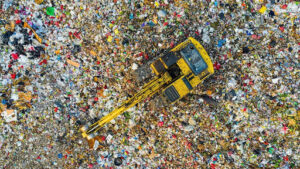We all produce waste every day. From homes to corporations, it accumulates more quickly than we realise. Managing waste properly is the actual challenge rather than creating it. Bad dumping damages our soil, water, and air. More intelligent techniques transform trash into valuable resources and even conserve the environment.
The correct attitude transforms everything for both little towns and major metropolises. Ormskirk skip hire reveals how basic solutions enable responsible waste disposal. By adopting effective and environmentally friendly approaches, we minimise damage and advance towards a cleaner future.
Choosing decisions that will help future generations, the environment, and mankind rather than merely removing waste, is at the heart of waste management. In this article, we will explore the 7 best waste disposal methods for a cleaner and safer environment.
Recycling
Recycling provides trash a second chance. Reusable materials include metal, glass, plastic, and paper. This lessens the demand for newly made goods from unprocessed materials. Recycling helps to minimise greenhouse gas emissions and also saves energy.
It converts trash into something of value. Neighbourhoods with recycling initiatives sometimes have cleaner surroundings. Simple too is recycling. You are part of the answer when you segregate your recyclables and place them in the proper trash.
Composting
Food scraps and garden leaves among organic garbage should not belong in landfills. Composting turns them into nutrient-dense soil. It is a natural process that facilitates plant development.
Composting lessens methane emissions and lowers landfill waste. With a little bin or outside, you may compost at home. Still now, many cities have composting initiatives. Among the simplest environmentally friendly behaviours to implement.
Wasted Energy
Not every waste is suitable for composting or recycling. Wastetoenergy systems assist there. Waste is burned at high temperatures in this process to generate energy. Local use produces electricity or steam from the heat.
WTE lowers the volume of trash destined for dumps and offers a dependable energy source. Critics raise concerns about emissions, but contemporary plants use filters and sophisticated systems to keep pollution low. WTE combines energy generation and waste removal intelligently.
Landfills Management
Still present are landfills, yet they have to be handled judiciously. Badly kept sites contaminate groundwater and soil. To stop leaks, modern sanitary landfills employ liners and drainage networks. They also collect methane gas, which could be used for energy.
Although landfills are not ideal, good administration reduces their damage. Still, the most effective strategy is to lessen the volume of trash they receive. However, until waste is reduced, better landfills have a function.
Incineration
Incineration differs from waste-to-energy. Its major aim is to burn trash to lower its mass. For medical and dangerous trash, the procedure is effective. It eliminates poisonous toxins and dangerous pathogens.
This guarantees that incineration is less hazardous than landfill disposal of hazardous materials. Still, to prevent air pollution, it needs tight emission restrictions. When handled properly, incineration is a sensible approach for some kinds of trash.
Biological Approach
Biological methods use microorganisms to disintegrate organic trash. This method is usually applied to sewage and industrial effluent. Before release, the procedure purifies the trash and lowers harmful substances. It can also generate valuable byproducts, including biogas.
Sustainable and cheap, biological therapy is. It copies natural cycles wherein microorganisms recycle nutrients back into the surroundings. Many present cities use this technique to properly handle enormous volumes of trash.
Source Reduction
The best garbage is the one never produced. Source reduction aims at eliminating waste before it even forms. Buying fewer packaged goods, carrying reusable bags, and repairing instead of replacing fall under this. Reusability presents still another layer.
Old jars, sacks, or clothing can be used again. By lowering landfill and recycling facility stress, this technique helps to conserve resources. For both homes and companies, it also helps to reduce expenses. Choosing wisely helps us to straight cut the waste issue.
Importance of Using these Methods
Every approach has its part. Recycling conserves resources. Composting helps nature. Wastetoenergy and biological treatment produce usable outputs. Incineration manages hazardous trash. Safe landfills guard water and soil. Source reduction prevents trash at its core.
These actions combine to create a balanced system. The wide application of them will shape the cleaner environment we aspire to. Large-scale governmental activity, coupled with minor alterations at home, makes the difference.
Conclusion
Waste disposal is not only a requirement. It is a burden we all carry. The Earth cannot always support the weight of indiscriminate disposal. Through clever techniques, we save resources, minimise pollution, and preserve health. Solutions, including recycling, composting, waste-to-energy, and others, demonstrate that development is feasible.
Every day choices launch the trip toward a greener environment. Together we can leave a better world for the next generation if every one of us makes modest moves. Better trash management is the way forward, not merely a choice.


